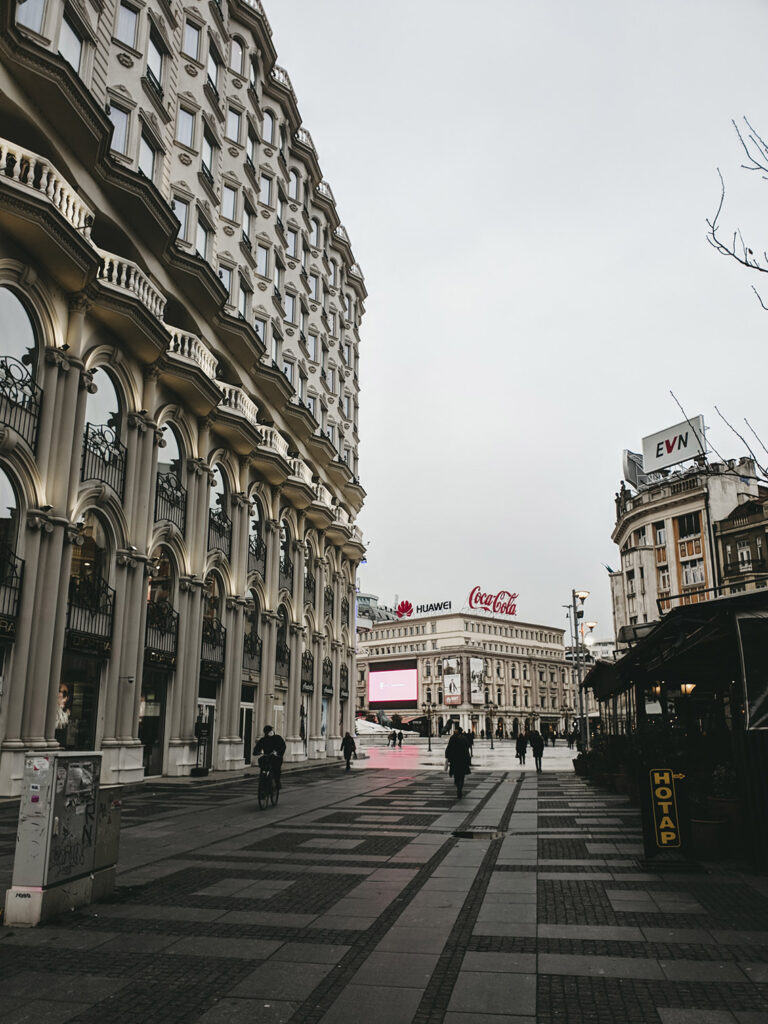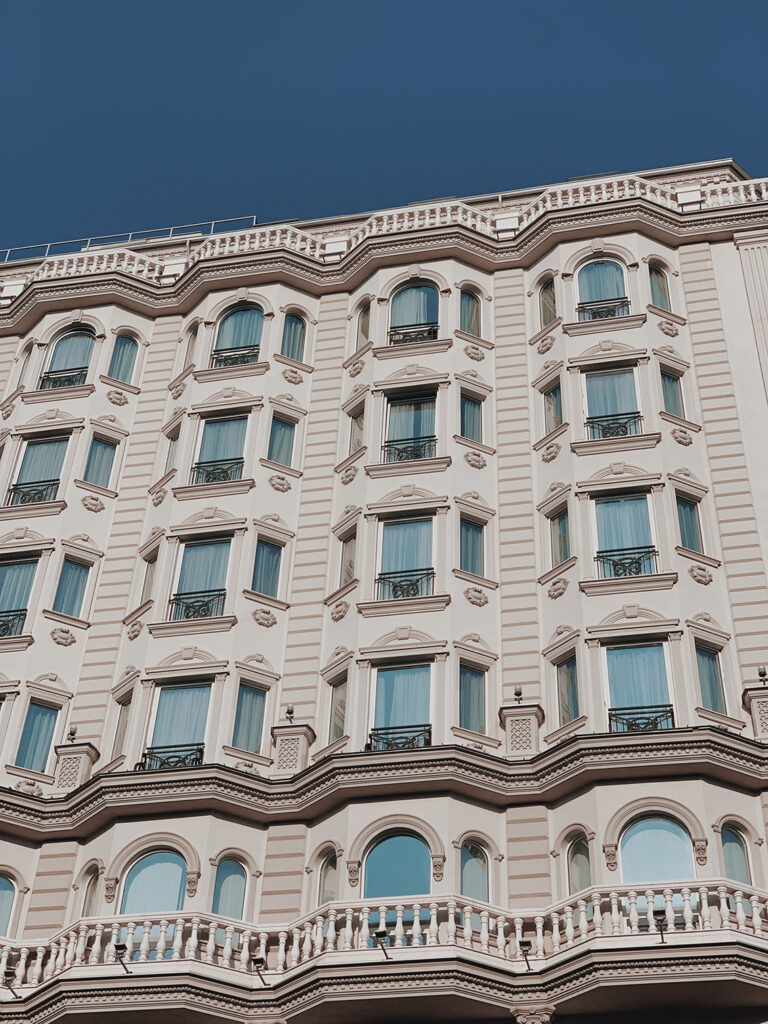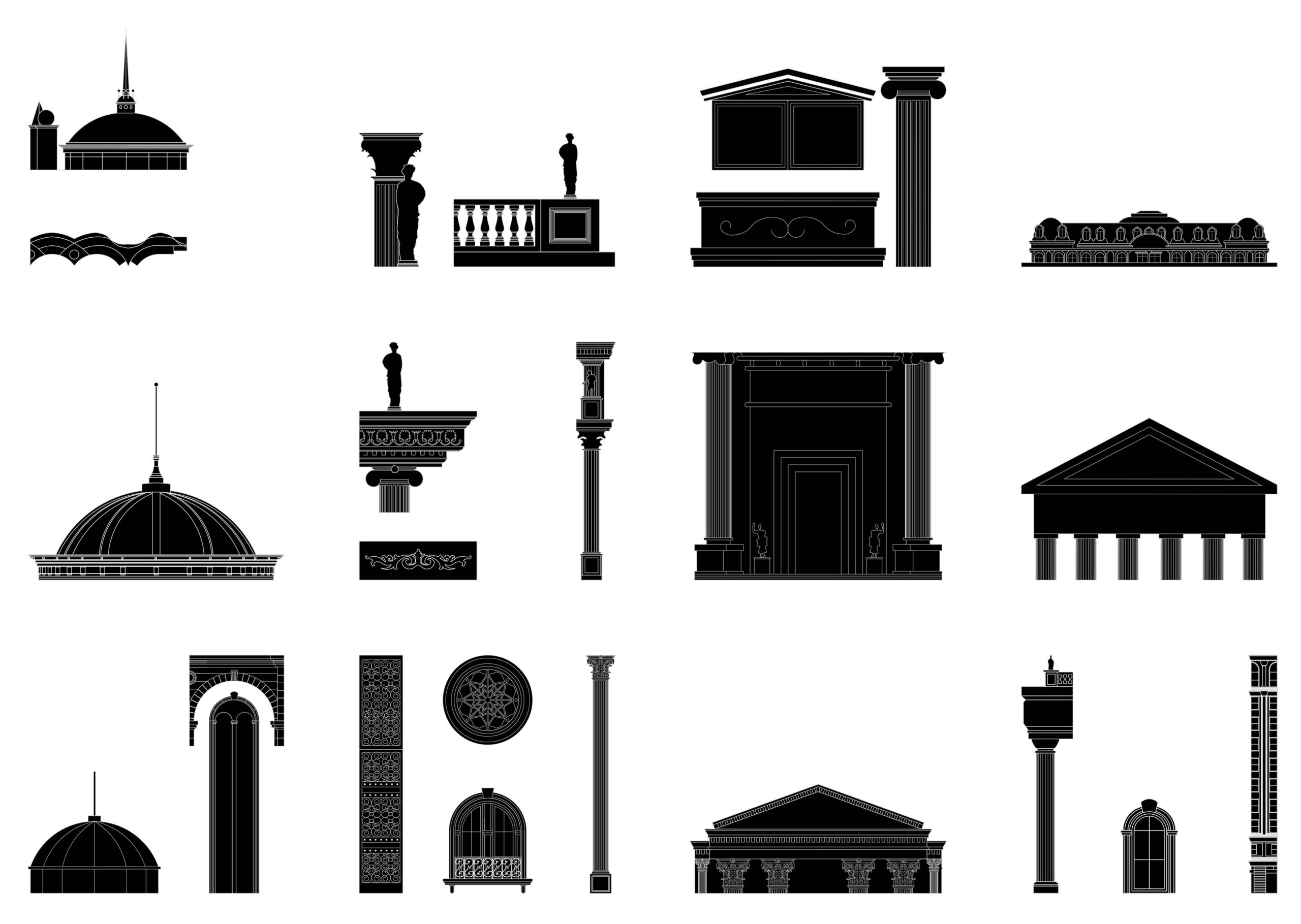
Photo by Albert Hyseni

Photo by Alexandar Todov
Invent is the principal tactic for (de)constructing architectural memory, used in the past decade in the center of Skopje. It is the leading method towards the dominant goal of the Skopje2014 strategy. In the essence of the term ‘(de)constructing’ lies the construction of something new as a parallel action to the decomposition of something existing. The creation of new architecture and the invention of meaning behind it, does not only conceal existing realities inside the city by taking away their spotlight, but it also implements new ones.
Its usage is easily combined with all of the other tactics, in order to enhance the effect. The more intense the presence of the invented architecture becomes, the more other actualities become neglected and forgotten. That intensity is achieved when tactics are being combined (for e.g. invent + frame, invent + borrow, invent + refacade, invent + emphasize etc.).
Invent can be a tactic which deals with modifications and adjustments of existing architecture or it can be a tactic implemented while creating new architecture. When existing architecture is being modified, inventing new “memories” by changing its appearance also means destroying the existing ones. Buildings are modified to look older and their exteriors are being redone in a different architectural language, implying that they went through a different course of history.
When creating new architecture, the architectural language being used is again implying a different course of history. The new buildings appear as if there has been
a time in the past when the architectural production in Skopje was speaking that chosen architectural language, when actually that was not the case, thus inventing architectural memory.
Inventing history through architecture has been so present in the last years. The new architecture was produced so extensively that it became the most visually-present, “history-telling” architecture in Skopje. The architecture from the period that is being neglected and forgotten on the other hand, is either concealed or modified to complement the newly invented one.
The term most used in the media, when spoken about the style of the newest layer of architecture in the city, is Baroque. This collage of used decorative elements shows how inconsistent this layer is in its efforts to present itself as baroque. One could not read at all a specific architectural style from it. This is another level of inventing. But, if we indulge the creators and take the term baroque for granted, one other issue appears: Baroque is a style that emerged in the 16th century and lasted until the 18th. In this period in time, Macedonia was a completely different context. While baroque was taking over parts of Europe, Macedonia was under the Ottoman Empire and going through a post-byzantine period of sacral production.
When inventing does not involve creating, is it a legitimate way of forming one’s identity?

Invented decorative elements
